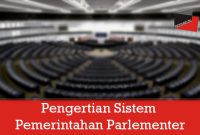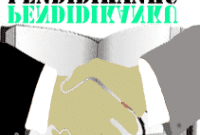Pengertian Belajar Pendidikanku.org – Belajar adalah perubahan yang umumnya permanen di dalam perilaku sebagai bentuk […]
Pengertian Tulang Keras (Osteon) Pendidikanku.org - Pengertian Tulang keras (Oestoen) ini ialah tulang yang bersifat […]
Related News
Headlines
Pendidikanku.Org
Pengertian Piramida Ekologi, Jenis, Contoh Beserta Gambar
Pengertian Piramida Ekologi Pendidikanku.org – Piramida ekologi adalah suatu diagram piramida yang bisa menggambarkan suatu […]
Pengertian Mineral, Klasifikasi, Fungsi, Sifat Fisik Mineral
Pengertian Mineral Pendidikanku.org – Pengertian mineral adalah zat yang terdapat di alam dengan kandungan suatu […]
Faktor Yang Mempengaruhi Efektivitas Organisasi
Efektivitas Organisasi Pendidikanku.org – Organisasi adalah suatu kelompok orang yang bekerja sama agar bisa mencapai […]
Pengertian Komunikasi Data
Pengertian Komunikasi Data Pendidikanku.org – komunikasi data adalah suatu proses pengiriman dan juga penerimaan data […]
Pengertian Kurikulum, Fungsi, Tujuan, Komponen dan Konsep
Pengertian Kurikulum Pendidikanku.org – Pengertian kurikulum adalah suatu program rancangan belajar mengajar yang dipedomani oleh […]
Pengertian Peran Sosial Dalam Sosiologi
Pengertian Peran Sosial Pendidikanku.org – Pengertian peran sosial adalah suatu pelaksanaan hak dan juga kewajiban […]
Pengertian Retribusi Daerah
Pengertian Retribusi Daerah Pendidikanku.Org – Pengertian Retribusi daerah adalah salah satu Pendapatan Asli Daerah yang […]
Sifat Dan Hakikat Sosiologi Terlengkap
Sifat Sosiologi Baca Pengertian Pengertian Sosiologi Adapun Sosiologi ini bersifat, sebagai berikut : Sosiologi Bersifat […]
Pengertian Ketenagakerjaan Dan Angkatan Kerja
Pengertian Ketenagakerjaan Pendidikanku.org – Tenaga kerja adalah setiap individu yang mampu untuk dapat melakukan pekerjaan […]
Pengetian IMK Adalah
Pengertian IMK (Interaksi Manusia dan Komputer) IMK Adalah – Interaksi manusia dan komputer didalam bahasa […]
Pengertian Database (Basis Data)
Pengertian Database (Basis Data) Pendidikanku.Org – Pengertian Database atau Basis Data adalah sebuah koleksi terorganisir […]
Pengertian Hidrologi
Pengertian Hidrologi Adalah Pendidikanku.Org – Pengertian Hidrologi (berasal dari Bahasa Yunani: Yδρoλoγια, Yδωρ+Λoγos, Hydrologia, yang […]
Menyingkap Rahasia di Balik Tekanan: Faktor-Faktor yang Berpengaruh
Tekanan, sebuah konsep fisika yang sering dijumpai dalam kehidupan sehari-hari, menyimpan rahasia menarik di baliknya. […]

























